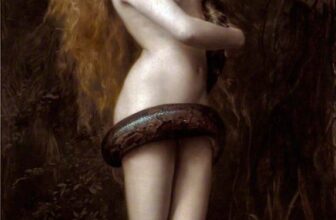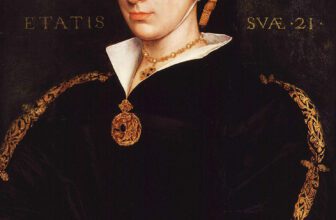
Does the House of Bourbon Still Exist?
The House of Bourbon is one of the most renowned and historically significant royal families in Europe, with deep ties to France, Spain, and Italy. Their rule saw the transformation of France into a dominant European power, but their legacy also includes the turbulence of revolutions, exiles, and restorations. Despite the dramatic twists in their history, the Bourbon family still exists today, albeit in a different form than their powerful ancestors. To understand their modern day presence, we must first explore their rise to glory and the fall that reshaped the monarchies of Europe.
The Rise of the House of Bourbon
The House of Bourbon traces its origins to the 13th century, emerging from the House of Capet. The family name comes from the Bourbon region in central France. By the late Middle Ages, the Bourbons had become one of the most powerful noble houses in France, and their ascension to the throne was only a matter of time.
Bourbon Kings of France
The Bourbons officially ascended to the French throne in 1589 with the rise of King Henry IV. As the first Bourbon king of France, Henry IV is best remembered for ending the Wars of Religion that had plagued France for decades. His conversion to Catholicism and the signing of the Edict of Nantes in 1598 helped ease religious tensions and paved the way for stability. His famous quote, “Paris is well worth a Mass,” reflects his pragmatism in unifying France under his rule.
Henry IV’s son, Louis XIII, continued to consolidate power, but it was his grandson, Louis XIV, the Sun King, who brought the Bourbon dynasty to its height. Louis XIV ruled France from 1643 to 1715 and turned the country into the most powerful state in Europe. His construction of Versailles symbolized the grandeur of the Bourbon monarchy, and his policies centralized royal authority like never before.
The Bourbon Expansion Across Europe
The Bourbons did not limit their influence to France. Through strategic marriages and wars, they extended their rule to Spain, Naples, and Sicily. The War of the Spanish Succession (1701–1714) resulted in Philip V, a Bourbon prince, becoming the King of Spain. This solidified the Bourbon presence outside France, creating two powerful branches of the family.
In addition to Spain, the Bourbons ruled in Naples, Sicily, and later Parma, further cementing their presence in European politics. These family ties led to intricate alliances and conflicts that would shape European history for centuries.
The Fall of the House of Bourbon
While the House of Bourbon experienced unparalleled heights of power, its downfall was equally dramatic. The very policies that had strengthened the dynasty eventually led to economic turmoil, social unrest, and revolution.
The French Revolution and the Fall of the Monarchy
By the late 18th century, France was in crisis. The extravagant spending of Louis XV and Louis XVI, combined with financial mismanagement and widespread social inequality, fueled resentment among the French people. The French Revolution (1789–1799) erupted, marking the beginning of the end for the Bourbon monarchy in France.
Louis XVI and his queen, Marie Antoinette, became symbols of the monarchy’s excesses. Their failed attempts to escape France only worsened their situation. In 1793, Louis XVI was executed by guillotine, followed shortly by Marie Antoinette. The monarchy was abolished, and France became a republic.
Although Napoleon Bonaparte later ruled France, the Bourbon family briefly regained power after his downfall in 1814. The Bourbon Restoration (1814–1830) saw Louis XVIII and Charles X attempt to reinstate monarchy, but their reigns were short-lived. The July Revolution of 1830 forced Charles X to abdicate, ending the Bourbon reign in France permanently.
Bourbon Rule in Spain and Other Territories
Despite losing the French throne, the Bourbon dynasty remained strong in Spain. The Spanish Bourbons continued to rule, though their power was challenged multiple times throughout the 19th and 20th centuries. With the Spanish Civil War (1936–1939) Franco reassigned the monarchy, but in 1975, King Juan Carlos I, a Bourbon descendant, played a crucial role in restoring democracy to Spain. His abdication in 2014 in favor of his son, King Felipe VI, marked a new chapter for the Spanish Bourbons.
In Italy, the Bourbon rule ended in 1860 when the Kingdom of the Two Sicilies was annexed into a unified Italy. The Bourbon Parma lineage also saw its influence diminish over time, yet members of the family still hold noble titles today.
Does the Bourbon Family Still Exist Today?
Yes, the House of Bourbon still exists, though their role in modern politics is far different from their historical prominence. The most notable Bourbon monarch today is King Felipe VI of Spain, who continues to rule under a constitutional monarchy. While the French branch of the Bourbons no longer holds the throne, pretenders to the defunct French crown still exist.
The two main claimants to the French throne today are:
- Louis Alphonse de Bourbon: Duke of Anjou, He is recognized by Legitimists as the rightful heir to the French throne, being a direct descendant of Louis XIV’s grandson, Philip V of Spain.
- Jean, Count of Paris: Representing the Orléans branch, he is descended from Louis-Philippe, who ruled France from 1830 to 1848.
While these claims are mostly symbolic, the Bourbon legacy remains influential in royalist circles and among history enthusiasts.
A Legacy That Endures
The House of Bourbon may no longer leading Europe as it once did, but its influence is undeniable. From the grandeur of Versailles to the constitutional monarchy of Spain, the Bourbons shaped the course of history. Their rise saw the creation of some of the most powerful European empires, while their fall reflected the changing tides of governance and society. Yet, despite revolutions and exiles, the Bourbon family endures, continuing to hold symbolic and historical significance in modern Europe.




